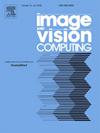3DPSR: An innovative approach for pose and shape refinement in 3D human meshes from a single 2D image
IF 4.2
3区 计算机科学
Q2 COMPUTER SCIENCE, ARTIFICIAL INTELLIGENCE
引用次数: 0
Abstract
In the era of computer vision, 3D human models are gaining a lot of interest in the gaming industry, cloth parsing, avatar creations, and many more applications. In these fields, having a precise 3D human model with accurate shape and pose is crucial for realistic and high-quality results. We proposed an approach called 3DPSR that uses a single 2D image and reconstructs precise 3D human meshes with better alignment of pose and shape. 3DPSR is referred to as 3D Pose and Shape Refinements. 3DPSR contains two modules (mesh deformation using pose-fitting and shape-fitting), in which mesh deformation using shape-fitting acts as a refinement module. Compared to existing methods, the proposed method, 3DPSR, delivers more enhanced MPVE and PA-MPJPE results, as well as more accurate 3D models of humans. 3DPSR significantly outperforms state-of-the-art human mesh reconstruction methods on challenging and standard datasets such as SURREAL, Human3.6M, and 3DPW across different scenarios with complex poses, establishing a new benchmark.
3DPSR:从单张二维图像细化三维人体网格姿态和形状的创新方法
在计算机视觉时代,三维人体模型在游戏行业、布料解析、头像创建以及其他许多应用领域都受到了广泛关注。在这些领域中,拥有一个具有精确形状和姿势的三维人体模型对于获得逼真和高质量的结果至关重要。我们提出了一种名为 3DPSR 的方法,它使用单张二维图像重建精确的三维人体网格,并更好地对齐姿势和形状。3DPSR 全称为 3D Pose and Shape Refinements。3DPSR 包含两个模块(使用姿态拟合的网格变形和形状拟合),其中使用形状拟合的网格变形作为细化模块。与现有方法相比,所提出的 3DPSR 方法能提供更强的 MPVE 和 PA-MPJPE 结果,以及更精确的人体 3D 模型。在 SURREAL、Human3.6M 和 3DPW 等具有挑战性的标准数据集上,3DPSR 在不同场景和复杂姿势下的表现明显优于最先进的人体网格重建方法,树立了新的标杆。
本文章由计算机程序翻译,如有差异,请以英文原文为准。
求助全文
约1分钟内获得全文
求助全文
来源期刊

Image and Vision Computing
工程技术-工程:电子与电气
CiteScore
8.50
自引率
8.50%
发文量
143
审稿时长
7.8 months
期刊介绍:
Image and Vision Computing has as a primary aim the provision of an effective medium of interchange for the results of high quality theoretical and applied research fundamental to all aspects of image interpretation and computer vision. The journal publishes work that proposes new image interpretation and computer vision methodology or addresses the application of such methods to real world scenes. It seeks to strengthen a deeper understanding in the discipline by encouraging the quantitative comparison and performance evaluation of the proposed methodology. The coverage includes: image interpretation, scene modelling, object recognition and tracking, shape analysis, monitoring and surveillance, active vision and robotic systems, SLAM, biologically-inspired computer vision, motion analysis, stereo vision, document image understanding, character and handwritten text recognition, face and gesture recognition, biometrics, vision-based human-computer interaction, human activity and behavior understanding, data fusion from multiple sensor inputs, image databases.
 求助内容:
求助内容: 应助结果提醒方式:
应助结果提醒方式:


